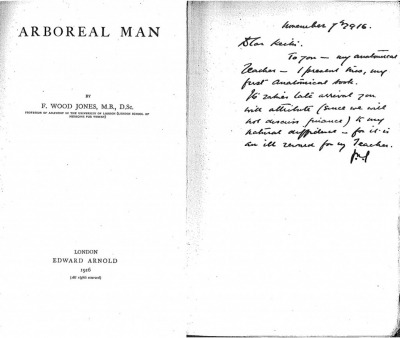If you want to capture the essence of the English countryside, my recommendation would be to spend time in the county of Shropshire. For one thing it is far from the tourist pentagon (its apices are London, Stratford-on-Avon, Edinburgh, York, Cambridge). Shropshire also has a special attraction for anyone interested in evolution; Shrewsbury, the county town, is where Charles Darwin was born and brought up. It is distressing that the family home that was Darwin’s birthplace is now used as offices, but the burghers of Shrewsbury have done Charles Darwin justice by naming the shopping center in the center of Shrewsbury the “Darwin Centre.” Take that Kansas!
But the quietest, and to my mind the most picturesque, parts of Shropshire are to the west of Shrewsbury near to Wales. It was in this border country, called the Welsh Marches, that we repaired just before the holidays to spend a few days in a farmhouse B&B. The farm was not far from the small market town of Knighton, so I asked our hosts if there was a secondhand bookshop in Knighton. Much to my surprise they said there was an excellent bookshop called Aardvark Books a mile, or so, away in the next village that went by the splendid name of Brampton Bryan (I promise I am not making this up!)
Aardvark Books, which occupies the first and second (US) floors of a complex of brick farm buildings, is expertly run by two ex-publishing executives. They specialize in second-hand non-fiction books and they buy overstocks, but instead of the rubbish that is found in most stores that specialize in overstocks, they are much more selective (more of that in the next blog). They had a fine selection of natural history and anthropology books and I was delighted to find a copy of Frederick Wood-Jones Arboreal Man. It was in excellent condition (no “foxing”!) other than an inscription on the title page in copper-plate handwriting that I reproduce below.
These days an inscription to “Keith” would be a reference to a forename, but in 1916 a professional person, especially the pupil of an eminent teacher, would always address someone by their family name. Although the signature is difficult to make out, this is Frederick Wood-Jones’ hand-writing and the book I had purchased in the depths of the Shropshire countryside was the signed copy the author sent to his erstwhile anatomy teacher, Arthur (later in 1921 to be “Sir Arthur”) Keith.
I have a soft spot for Arthur Keith. He was a distinguished anatomist who combined a passion for comparative anatomy and anthropology with an interest in the conducting system of the heart (he was one of the discoverers of the atrio-ventricular node, whose eponymous name is “the node of Keith and Flack”). He had been very helpful to my old anatomy teacher Eldred Walls. They were both tall, cadaveric, Scots gentlemen; Arthur Keith hailed from Aberdeen and Eldred Walls from Glasgow. Keith was the author of the “pre-sapiens hypothesis” that posited modern humans evolved alongside more primitive hominids (as they would have been called in Keith’s time). This resulted in Keith making a couple of unfortunate choices, namely lending his support to those who claimed great antiquity for the remains from Galley Hill and to the claim that Piltdown Man was a bone fide human ancestor. Over the following decades Keith gradually modified his views, and this is reflected in the views expressed in New Discoveries Relating to the Antiquity of Man (1931). He also redeemed himself with the careful studies (together with Theodore McCown) of the hominid remains from Mount Carmel recovered by the American School of Prehistoric Research and the British School of Archaeology in Jerusalem. The results of these studies were published in 1939 in the second of the two volumes entitled The Stone Age of Mount Carmel.
Keith retired as Conservator at the Royal College of Surgeons of England in 1933, but in the same year he was appointed the first Master of the Royal College of Surgeons of England’s Buckston Brown Research Farm located at Downe, in Kent. At that time Charles Darwin’s old home, Down House, was owned by the Royal College of Surgeons of England, and Arthur Keith lived in Down House until his death in 1955. His autobiography is well worth reading.


